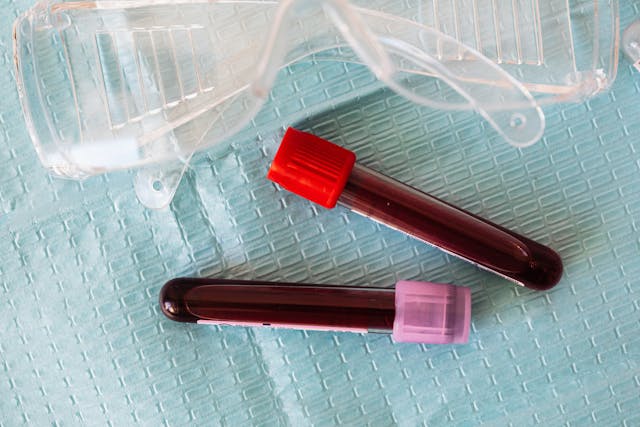Blood clots are a silent but dangerous health threat that can lead to life-threatening conditions like strokes or pulmonary embolisms. Every year, nearly 900,000 Americans face blood clot-related issues, with around 100,000 deaths resulting from complications. Recognizing the early warning signs of blood clots can save lives—and today, we’ll uncover these symptoms and share ways to reduce your risk.
What Are Blood Clots and Why Are They Dangerous?
Imagine your blood vessels as highways carrying vital nutrients, oxygen, and immune cells throughout your body. When a blood clot forms unnecessarily, it acts like a traffic jam, blocking blood flow and cutting off oxygen to essential organs like the heart, lungs, or brain.
Clots are natural when stopping bleeding after an injury, but they become dangerous when they develop without cause, potentially leading to conditions like:
- Deep vein thrombosis (DVT): Clots in deep veins, often in the legs.
- Pulmonary embolism (PE): A clot that travels to the lungs.
- Stroke: A blockage in blood flow to the brain.
Warning Signs of Blood Clots
Here’s a closer look at nine key symptoms of blood clots:
- Swelling in One Limb
- Swelling in just one leg or arm could signal a DVT. The area may feel warm, look red, or appear larger than the other limb.
- Persistent Headaches
- Severe headaches, especially those resistant to treatments, might indicate a cerebral venous sinus thrombosis (CVST)—a clot in the brain’s veins.
- Shortness of Breath and Chest Pain
- A sudden inability to breathe or sharp pain in the chest could point to a pulmonary embolism.
- Skin Color Changes
- Red, blue, or purple skin discoloration without injury may indicate poor blood flow due to a clot.
- Persistent Cough or Bloody Sputum
- A lingering cough, especially with blood, could signal a clot in the lungs.
- Leg Cramps or Soreness
- Unexplained, persistent leg pain or cramping, particularly in one leg, is a common sign of DVT.
- Extreme Fatigue
- Feeling abnormally tired might suggest your body is compensating for blocked blood flow.
- Dizziness or Lightheadedness
- Frequent dizziness, especially paired with shortness of breath or vision changes, might indicate a clot restricting oxygen flow.
- Jaw Pain or Toothache
- Rarely, a clot might cause referred pain in the jaw or teeth, especially if coupled with chest discomfort.
How to Prevent Blood Clots
Preventing blood clots often comes down to healthy habits. Here are 8 practical tips to keep your blood flowing smoothly:
- Stay Active
- Regular movement—like walking or stretching—prevents blood from pooling, especially during long periods of sitting.
- Stay Hydrated
- Drinking plenty of water helps keep your blood thin and reduces clotting risks.
- Eat Heart-Healthy Foods
- Add leafy greens, berries, and fatty fish to your diet to lower inflammation and improve vascular health.
- Quit Smoking
- Smoking damages blood vessels and significantly increases clot risks.
- Monitor Medications
- Certain medicines, like hormonal therapies, can raise clot risks. Talk to your doctor about potential adjustments.
- Check Blood Pressure and Cholesterol
- High levels increase clotting risks. Regular monitoring and medical guidance are vital.
- Wear Compression Stockings
- Useful during travel or recovery, they promote blood flow and reduce clot risks.
- Practice Good Posture
- Sit up straight and take regular breaks to stretch or walk.
Why Early Detection Matters
By being alert to subtle signs like leg pain, fatigue, or sudden skin changes, you can act quickly to prevent a clot from becoming life-threatening. Even small lifestyle adjustments, such as staying active and eating healthier, can significantly lower your risk.
For personalized advice, consult your healthcare provider—especially if you’re on medication or have risk factors like obesity, pregnancy, or a family history of clots.
FAQs
1. What should I do if I suspect a blood clot?
Seek immediate medical attention. Quick diagnosis and treatment are crucial to prevent complications.
2. Who is most at risk of developing blood clots?
Those who are inactive, pregnant, overweight, or have a history of clots are at higher risk.
3. Are blood clots always painful?
No, some clots form silently without noticeable pain, which is why recognizing other symptoms, like swelling or discoloration, is vital.
For more trusted health insights, visit medicaltimes.io—your go-to source for staying informed and proactive about your well-being.
